Pallet Inverter: How to Ensure Traceability When Rotating Supply Pallets?
In a busy production environment, especially in demanding sectors like the steel industry, you handle tons of material every hour. You need to switch pallets for all sorts of reasons—moving from a wooden supply pallet to a sanitized in-house one, or preparing for international shipping. But here's the problem: every time you transfer a load, you create a risk. You risk losing the crucial link between the product and its data. A simple manual error in relabeling can break your traceability chain, causing major disruptions in your supply chain, quality control, and customer trust. This small gap can lead to huge problems, like shipping the wrong order or being unable to trace a defective batch.
To ensure traceability when using a pallet inverter to rotate supply pallets, you must integrate automated identification technologies directly into the pallet exchange process. This involves using systems like barcode scanners or RFID readers that automatically capture data from the original pallet and product. This data is then linked to a newly generated label or tag for the new pallet, all managed through a centralized software system like an MES or WMS. This creates a seamless, error-proof digital record of the transfer.
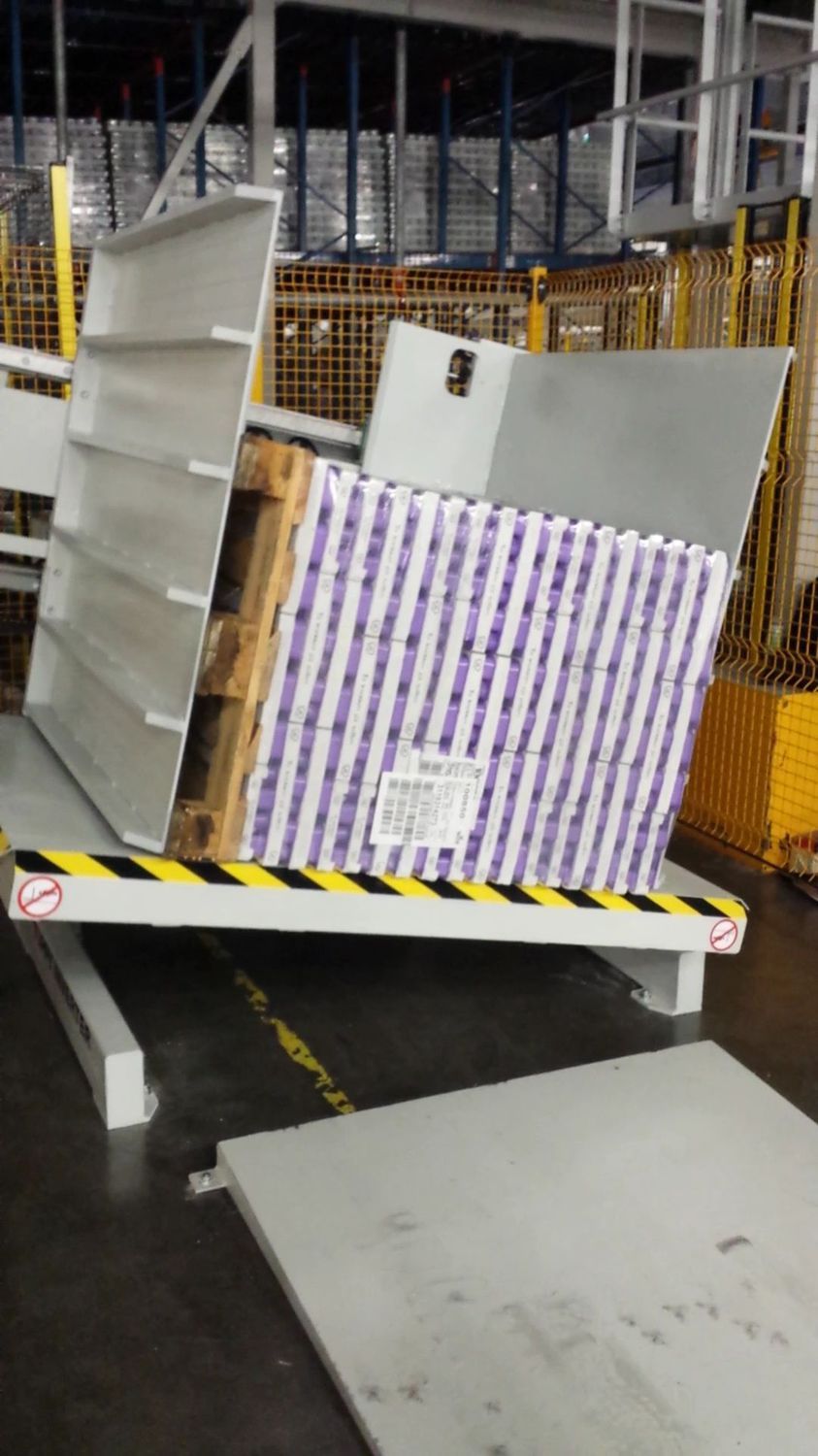
This integration of hardware and software is the key to closing the traceability gap. But how do you actually put these pieces together? What specific technologies should you choose? And how do you create procedures for your team to follow so that the system works every single day? I've spent my career working on these exact problems, first on the factory floor and now as a factory owner myself. Let's walk through the essential elements you need to build a truly reliable traceability system around your pallet inverter.
What are the key technologies for maintaining traceability during pallet inversion?
You've decided a pallet inverter is necessary for your operation. That's a great step. But then you think about the process. An operator inverts a two-ton load of steel wire, then has to manually find, print, and apply a new label. The potential for error in that simple action is enormous. A single wrong digit, a label applied to the wrong pallet, and a high-value product is now essentially lost within your own facility. This kind of mistake doesn't just cause a logistical headache; it costs real money and can damage your reputation with clients who depend on your accuracy. The solution is to take the guesswork and human error out of the equation by using automated technologies that capture and transfer data correctly every time.
The key technologies for maintaining traceability during pallet inversion are automated barcode scanning, Radio-Frequency Identification (RFID), and deep integration with Manufacturing Execution Systems (MES) or Warehouse Management Systems (WMS). These technologies work as a team. The scanners or readers capture the product's identity, and the software confirms it and records the entire transaction, ensuring no information is ever lost during the pallet switch.
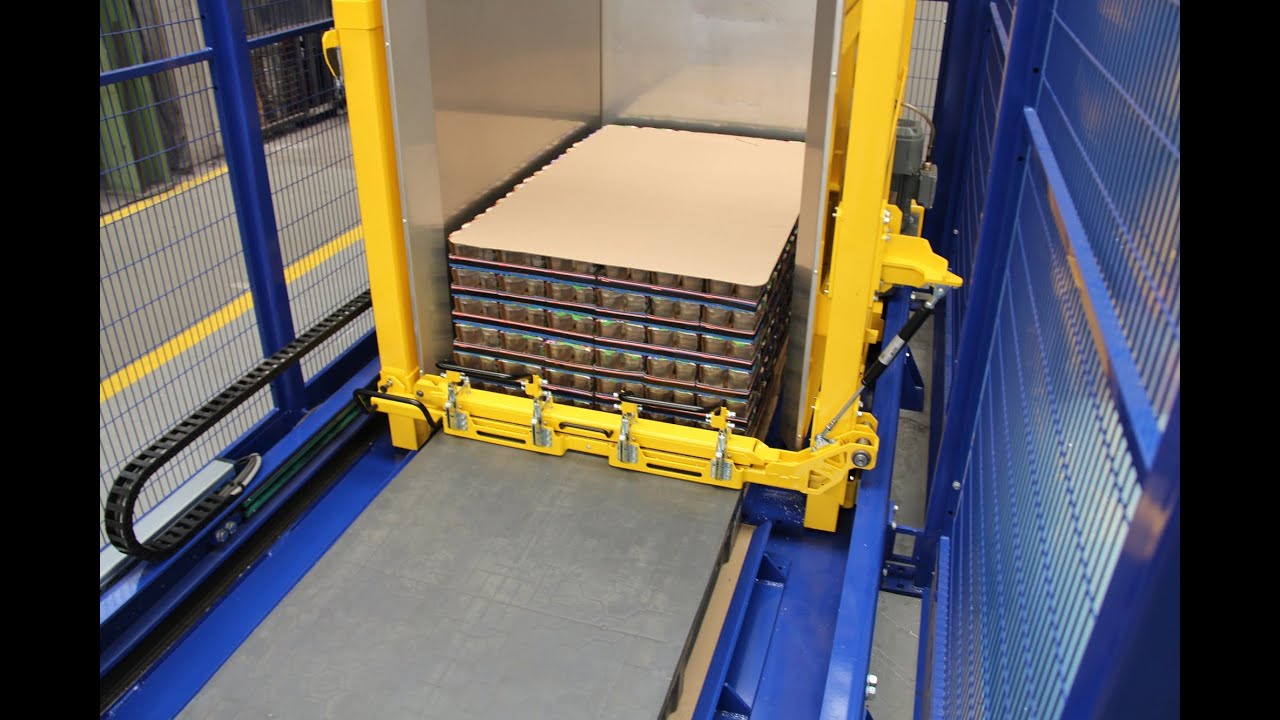
Barcode Systems: The Reliable Workhorse
Barcode technology is the foundation of modern logistics for a reason. It is proven, cost-effective, and understood by everyone in the supply chain. For a pallet inversion process, you can mount fixed-position scanners at the entry and exit points of the pallet inverter. When a pallet moves into the station, its barcode is automatically scanned. The system captures this information and holds it. After the machine rotates the load onto a new pallet, the system triggers an industrial printer to generate a new label. This new label contains all the necessary information and a new tracking ID. In more advanced setups, a robotic arm can even apply the new label automatically. The critical step is that the software links the old pallet ID to the new one, maintaining a perfect chain of custody.
RFID: The Next Level of Automation
For harsh environments like a steel mill, barcodes on paper labels can sometimes be a liability. They can get torn, smudged with grease, or covered in dust, making them unreadable. This is where Radio-Frequency Identification (RFID) offers a major advantage. An RFID tag is a small chip enclosed in a durable plastic casing. It doesn't need a direct line of sight to be read. You can set up an RFID reader portal around the pallet inverter's entrance. As the pallet passes through, the reader instantly captures the data from the tag, even if it's not perfectly aligned. After the inversion, a new RFID tag is programmed with the updated information and applied to the new pallet. RFID is more of an investment upfront, but for high-value goods or in operations where 100% read rates are non-negotiable, the reliability and labor savings it provides are well worth it. It significantly reduces the risk of data loss due to environmental factors.
Technology Comparison for Your Operation
Choosing the right technology depends on your specific needs, environment, and budget. Here is a simple breakdown to help guide your decision:
| Feature | Barcode System | RFID System |
|---|---|---|
| Initial Cost | Low | High |
| Read Method | Requires direct line of sight | No line of sight needed |
| Durability | Low (paper labels are fragile) | High (tags are encased and rugged) |
| Data Security | Moderate | High (data can be encrypted) |
| Labor Requirement | Can be higher if manual scanning is used | Lower due to automated reading |
| Best For | General logistics, controlled environments | Harsh environments, high-value goods, high-volume automation |
How does software integration create a seamless traceability workflow?
So, you have a top-of-the-line pallet inverter and a high-speed barcode scanner. This is a good start, but they are still just two separate pieces of hardware. The inverter knows it flipped a load, and the scanner knows it read a code. But if they don't talk to each other and to your central management system, you haven't solved the traceability problem. You've just created separate islands of information. This data gap is where mistakes happen. An operator might assume a scan was successful when it wasn't, or the system might not record the link between the old pallet and the new one. The entire process becomes unreliable. True, seamless traceability is only achieved when your hardware is intelligently connected to your core business software, creating a single, unified workflow.
Software integration creates a seamless traceability workflow by connecting the pallet inverter's physical actions and the data from scanners directly to a central database, such as a Warehouse Management System (WMS) or a Manufacturing Execution System (MES). This software acts as the brain of the operation. It validates every piece of data, logs every action, links the old pallet ID to the new one, and creates a real-time, fully auditable record of the entire pallet exchange process from start to finish.
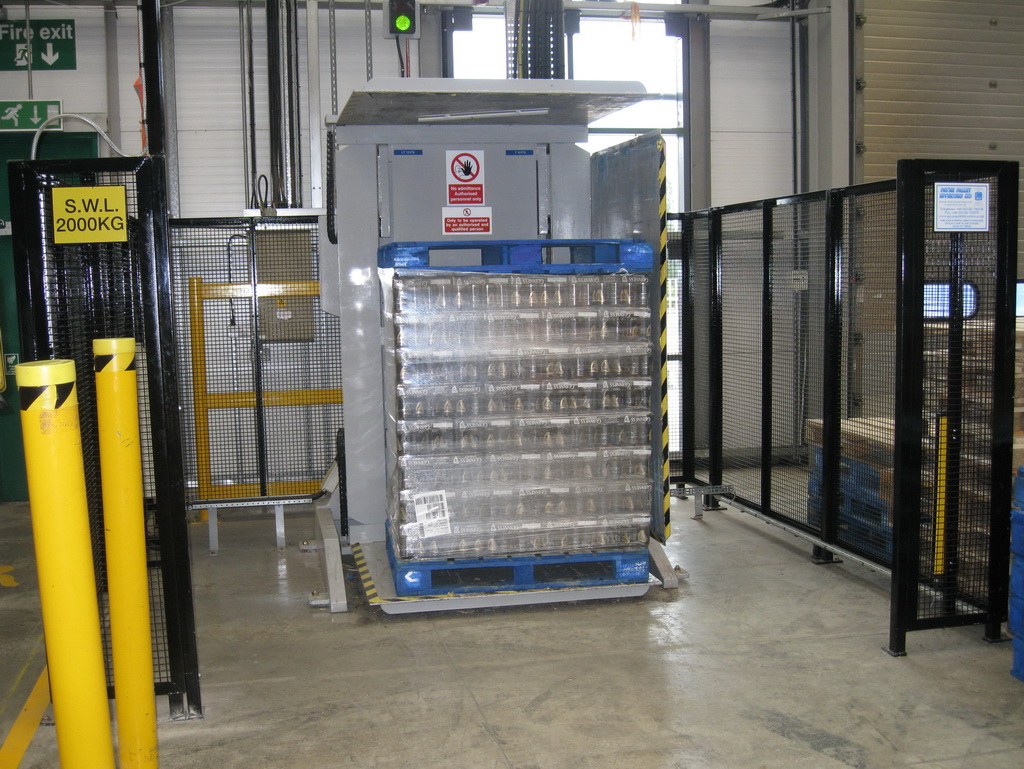
The MES/WMS as Your Central Truth
In a manufacturing facility, especially a complex one like a steel mill, the MES is the single source of truth. It tracks everything from raw materials to finished goods. When you integrate your pallet inverter into the MES, you are making it a key data-collection point in your production journey. Here is how a typical integrated workflow looks:
- A pallet of steel coils arrives at the inverter station.
- An automated scanner reads the barcode on the coil.
- The data is sent to the MES, which instantly verifies the product ID and confirms it is at the correct stage for a pallet exchange.
- The MES gives the "go-ahead" signal to the pallet inverter's control system.
- The inverter safely performs the rotation, placing the coils on a new, outbound pallet.
- The MES then commands an industrial label printer to generate a new pallet label.
- This new label is applied and scanned for verification.
- The MES finalizes the transaction in its database, creating a permanent, unbreakable link:
Old_Pallet_ID->Product_ID->New_Pallet_ID.
Bridging the Gap with APIs and Middleware
Modern equipment is designed for this kind of connectivity. Most new pallet inverters, scanners, and printers come with Application Programming Interfaces (APIs). Think of an API as a universal translator that allows different pieces of software and hardware to speak the same language. It makes integration relatively straightforward. However, I know many factories have a mix of new and older equipment. You might have a 15-year-old MES that doesn't have a modern API. This does not have to be a deal-breaker. This is where middleware comes in. Middleware is a special piece of software that acts as a bridge between your new pallet inverter and your older legacy system. A good integration partner can help you develop this bridge, allowing you to modernize one part of your operation without having to replace your entire software infrastructure at once.
What operational procedures must be in place to support automated traceability?
You can invest in the most advanced pallet inverter and integrate it perfectly with your MES software. You might feel like the job is done. But I have seen firsthand that technology is only half the solution. The other half is people and processes. If your team doesn't understand how to use the new system, or if there are no clear instructions for what to do when something goes wrong, your expensive, high-tech system will quickly become a source of frustration and failure. An operator who creates a manual workaround "just this once" to meet a deadline can compromise the integrity of your entire traceability system. Strong, clear operational procedures and thorough team training are the foundation that makes your technology investment truly pay off.
To support automated traceability with a pallet inverter, you must establish and enforce clear Standard Operating Procedures (SOPs) for the entire process. This includes comprehensive training for operators on how the system works and why it's important. It also means defining crystal-clear protocols for handling exceptions like scan failures or system errors, and implementing a schedule of regular audits to ensure everyone is following the procedures and the data remains accurate.
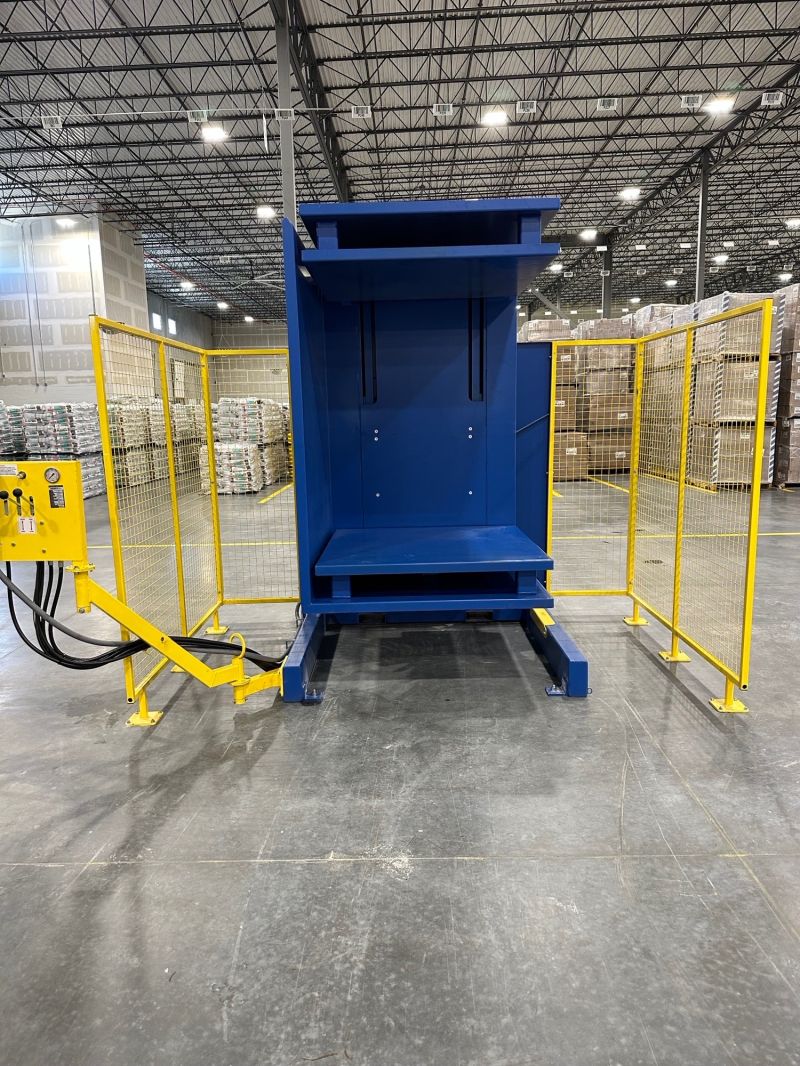
Building a Bulletproof Standard Operating Procedure (SOP)
Your SOP is your playbook. It should be written in simple language and be easily accessible to every operator. It must leave no room for guesswork. A good SOP for an automated pallet inversion station should include:
- Pre-shift checklists: A simple list of checks to ensure the scanner is clean, the printer has labels, and the inverter is clear of obstructions.
- Step-by-step instructions for normal operation: A clear, numbered or bullet-pointed guide for processing a standard pallet.
- A detailed error-handling guide: This is the most important part. What should an operator do if a barcode won't scan? Or if the system gives a "data mismatch" error? The SOP should provide a simple flowchart for these situations.
- Contact list: Who should the operator call for a mechanical problem versus a software problem?
Training Your Team for Success
Training should go beyond just showing someone which buttons to press. Your operators are your first line of defense for quality and accuracy. They need to understand the "why" behind the technology. When I work with clients, I make sure to explain how maintaining traceability protects the company, ensures customer satisfaction, and ultimately makes their own jobs easier by preventing time-consuming problems down the line. Empower your operators by training them in basic troubleshooting. When they feel a sense of ownership over the system, they are more likely to care for it and use it correctly. Create a culture where reporting a problem is seen as a positive action, not a mistake.
Auditing for Continuous Improvement
A system like this is never "set it and forget it." You need to build in a process of regular checks to ensure it's working as intended.
- Regular Audits: Once a week, have a supervisor randomly select five pallets that were processed through the inverter. They should then use the MES to verify the traceability records. Does the data match perfectly? Is the chain of custody complete?
- Analyze System Logs: Your integrated software creates a log of every action, including errors. Periodically review these logs. Are you seeing a lot of "unreadable barcode" errors? This might point to a problem with your label supplier or a dirty scanner lens. This data is invaluable for proactive maintenance and continuous improvement.
| Error Condition | Immediate Operator Action | Supervisor/Lead Action | |
|---|---|---|---|
| Unreadable Barcode | Attempt to rescan up to two times. If it fails, halt the pallet. | Move the pallet to a designated quarantine area. | Manually identify the product, log an exception in the MES with a reason code, and then clear the pallet for processing. |
| System Error Alert | Immediately stop the process by pressing the E-stop. | Notify IT support and the maintenance team. | Document the error code and await instructions from the support teams. Do not attempt a manual override. |
| New Label Fails to Print | Do not move the pallet. Halt the process. | Check the printer for errors (out of labels, jam). | Resolve the printer issue, then use the MES interface to re-trigger the print command. Verify the correct label is applied before releasing the pallet. |
My Insights: Beyond the Machine, It's About Partnership
You can read countless articles and technical specification sheets about pallet inverters. You can compare clamping pressures, rotation speeds, and software features from ten different suppliers. But I can tell you from my own journey, buying a machine is not the same as solving a business problem. Many suppliers are happy to sell you a piece of equipment, ship it to your factory, and then their job is done. But what happens six months later when you need to integrate it with your 15-year-old MES? Or when you need to modify it to handle a new type of product? Suddenly, you are on your own. Your expensive investment becomes a standalone machine that creates bottlenecks instead of solving them. I have heard this story far too many times.
From my perspective as an engineer who started on the factory floor and later built my own factory, achieving perfect traceability is not just about buying the right hardware. It is about forming a strategic partnership with a supplier who understands your entire operation. A true partner works with you to understand your specific challenges—from aging equipment to your goals for digital transformation—and provides a total solution, not just a machine in a box.
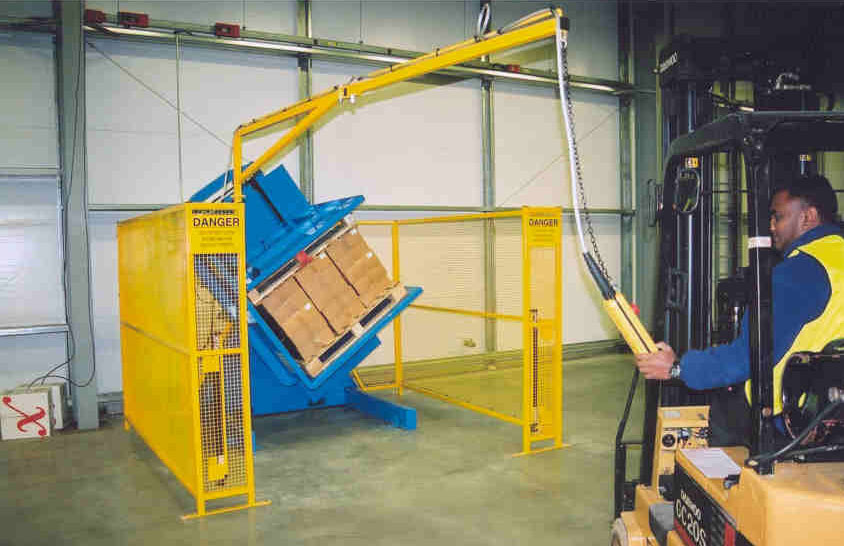
My Journey Shaped My Philosophy
When I started as a young engineer, I wasn't just designing machines from an office. I was on the factory floor, seeing how these machines performed in the real world. I saw how a poorly designed or badly integrated piece of equipment could disrupt an entire production line, causing stress for the operators and losses for the company. When I got the opportunity to start SHJLPACK, I knew I had to do things differently. My goal was never to just sell the most machines. It was to solve the whole problem. That is why our slogan is "TOTAL SOLUTION FOR WRAPPING MACHINE". For me, this is more than a slogan; it is a promise based on my own experience.
What a "Total Solution" Means for a Steel Mill
A business like a modern steel mill has a unique set of challenges. A real partner doesn't just see a customer; they see those specific challenges and think about how to solve them.
- Integrating with Aging Equipment: You have equipment that is over 15 years old. A good partner doesn't force you to replace everything. They ask, "How can we make our new technology communicate with your existing systems?" We've spent years developing custom interfaces and middleware to act as that bridge. We connect the new to the old.
- Solving Your Core Problems: Your biggest challenges are energy costs, equipment reliability, and environmental pressures. A pallet inverter isn't just a material handling device; it's a tool to address these issues. A reliable, automated inverter reduces downtime. Less downtime means higher overall equipment effectiveness (OEE), which improves your energy efficiency per ton of steel produced. It becomes a critical data capture point for your digitalization strategy, feeding real-time information to your MES and helping you achieve your cost-reduction goals.
- Customization for Heavy Industry: A steel mill handles loads that are heavy, abrasive, and sometimes unbalanced. A standard, off-the-shelf pallet inverter built for a food warehouse will not survive in your environment. We build our machines for these conditions. This means heavy-duty steel construction, powerful but precise clamping systems that won't damage your product, and seamless integration with things like overhead cranes and coil cars. I have personally supervised projects where we designed inverters to handle 2.5-ton steel coils, ensuring the process was not only traceable but completely safe for the operators. This is what a total solution looks like.
Conclusion
Ensuring traceability with a pallet inverter requires a blend of automated technology, integrated software, and solid operational procedures. It is a complete system, not just one machine.



